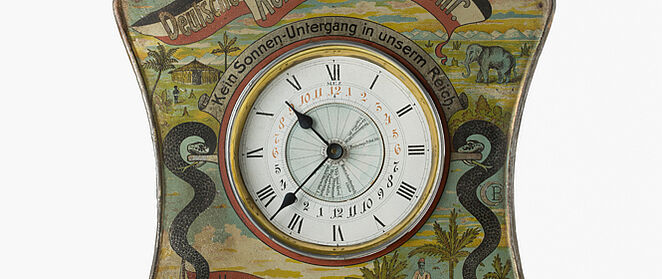GERMAN IMPERIAL COLONIAL CLOCK
Germany, around 1905

The exhibition
In the exhibition ‘German Colonialism. Fragments Past and Present’, featuring more than 500 exhibits, the Deutsches Historisches Museum addresses various aspects of German colonialism for the first time. Although the German Empire was one of the major European colonial powers from 1884 until the end of the First World War, it is only in the past few years that the colonial past has increasingly begun to enter public consciousness in Germany. The exhibition offers fascinating insight into the interests, development and dynamics of German colonial history and tells of the scope of action within which a broad spectrum of German, African and Oceanian players pursued their aims and motives.
German imperial colonial clock
To be sure, the relationship between the colonies and the Empire was one of mutual influence. Colonial wares, stereotypical product advertisements and everyday objects such as this clock pervaded the daily life of the population and contributed to building colonial consciousness in Germany. The clock, which communicated the German Empire’s claim to imperial power, was produced in large quantities. The animals and plants on the clock case portray exotic ideas of the colonial empire, which was supposed to be secured by expanding the fleet according to the Kaiser’s dictum ‘Our future lies upon the water’. A disc in the clock face shows the local times of the colonies, illustrating the maxim ‘The sun never sets on our empire’, a claim made earlier by Charles V in the 16th century.